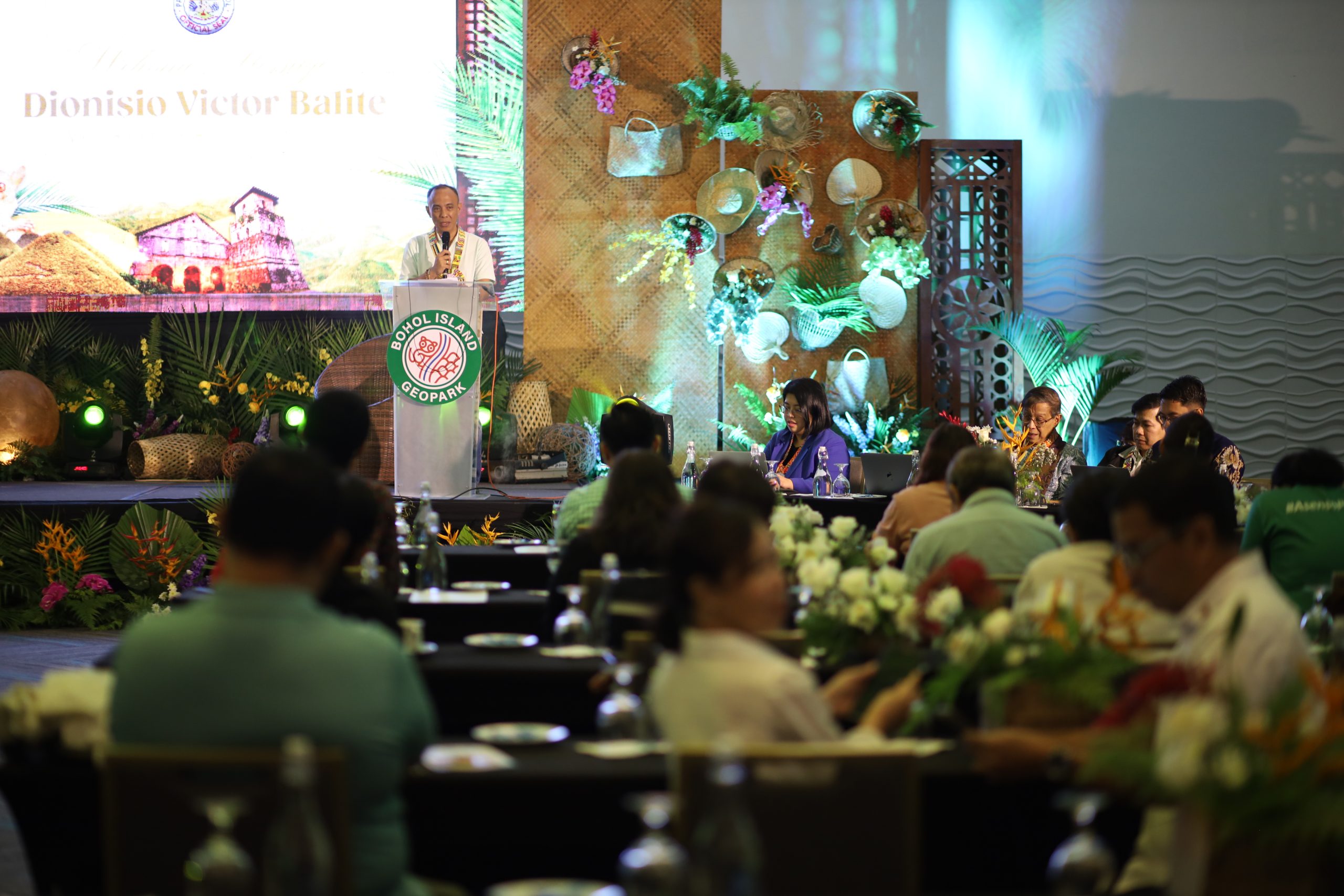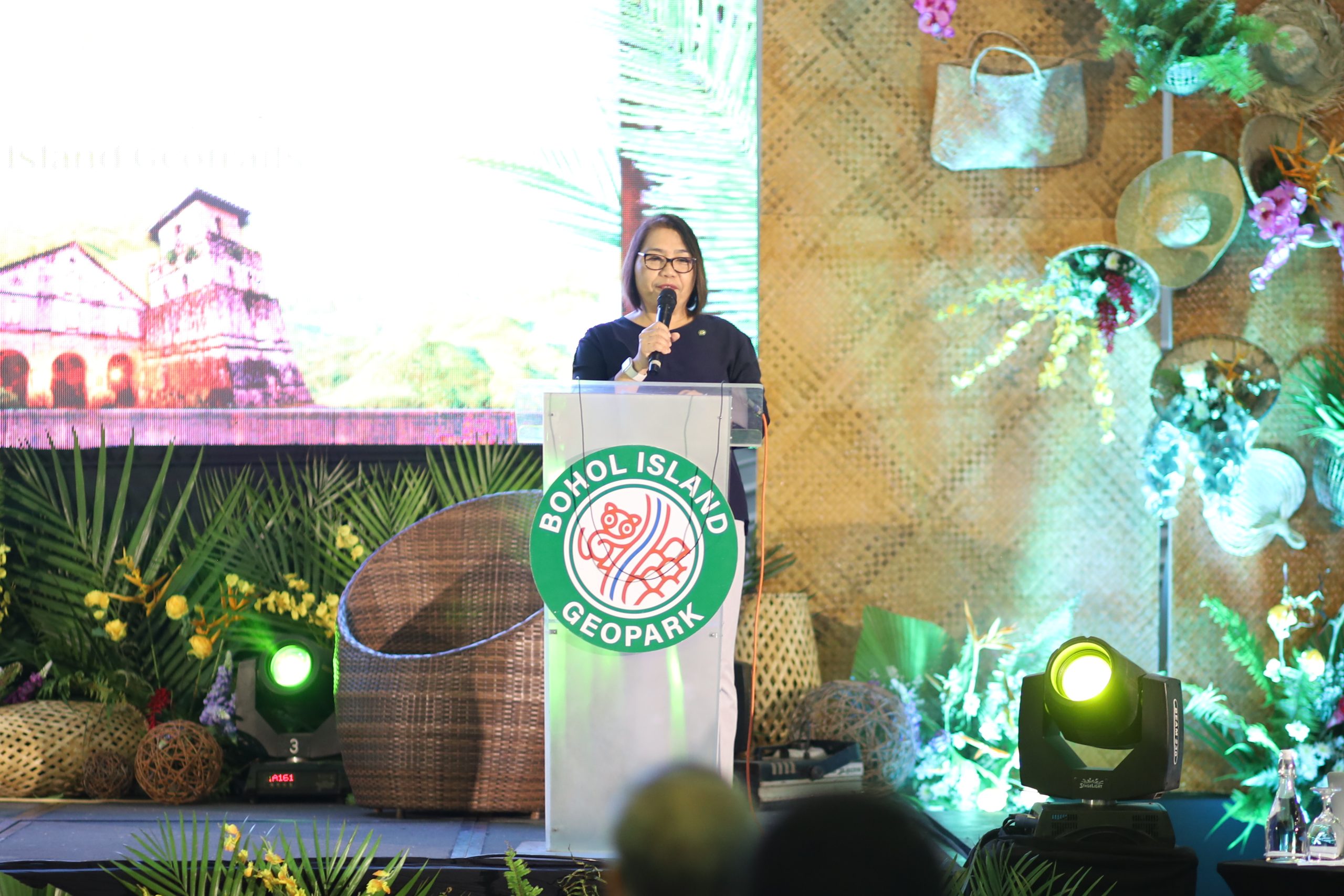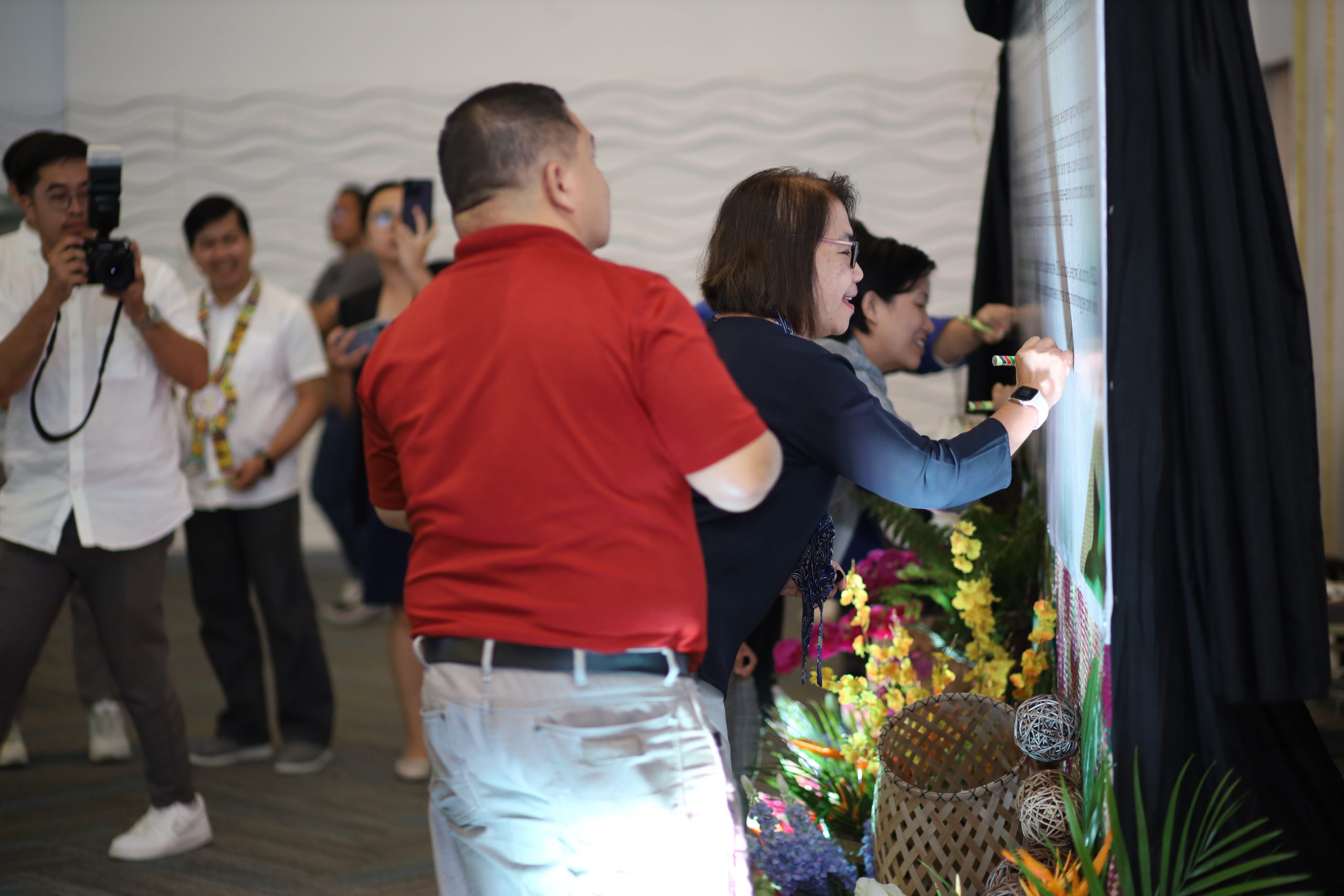Seven months after Bohol was designated as the first UNESCO Global Geopark in the country, the provincial government held its first international forum among stakeholders to discuss sustainable management.
The event, held on Dec 5 at the Bellevue Resort, was attended by various stakeholders from tourism, academe, national government agencies, local government units, non-government organizations, cultural workers, and environmental advocates.
The first-ever international forum, with the theme: ”Sustainable Management of Geoparks: Raising Awareness, Empowering Partners,” aims to create a dialogue among Boholanos of their responsibility on the Geopark designation and its advocacy of environmental sustainability, empowering local MSMEs, culture preservation, and promoting ecological-friendly tourism.
During the whole-day event, the provincial government, through the Bohol Provincial Environment Management Office (BPEMO) and the Bohol Provincial Tourism Office (BPTO), invited Prof. Emeritus Dato’ Ibrahim Komoo of Malaysia, Global Geopark Network Vice President; and Mohamad Farid Zaini of Indonesia to discuss Geopark development and best practices.
They discussed on how to highlight the significance of collaborative stakeholder efforts in the pursuit of holistic protection, education, research, and sustainable development.
“The Bohol UNESCO Global Geopark is not just a title, but a responsibility to protect our natural resources and cultural heritage for more generations to come,” said Vice Gov. Dionisio Victor Balite in the welcome address he delivered for Gov. Erico Aristotle Aumentado at the event.
Other topics discussed included the Philippine UNESCO Trail, a tourism trail that will connect the Bohol Island UGGp to other UNESCO-designated and inscribed areas in the country, such as Cebu City Creative City of Design or the World Heritage Site Banaue Rice Terraces.
This was discussed by Gil Butch Carungay, lead of Cebu’s UNESCO Creative City of Design.
UNESCO National Commission of the Philippines Deputy Executive Director Lindsay Barrientos tackled the role and functions of their agency, while Dr. Lutgardo Labad discussed the role of arts and cultural heritage in animating the Bohol Island UNESCO Global Geopark.
Geologists Dainty Rabang and Karl Michael Din gave insights on Bohol’s geology and the journey Bohol endured leading to its designation as a UNESCO Global Geopark.
A ceremonial turn-over took place of the official map of the island as UNESCO Global Geopark provided by the National Mapping and Resource Information Authority (NAMRIA).
Present during the presentation were Engr. Leo Grafil, OIC of NAMRIA’s cartography division-mapping and geodesy branch, together with BPEMO OIC Jovencia Ganub and BPTO OIC Joanne Pinat.
Pinat gave a presentation of new Bohol geotrails, unveiling new tour circuits that visitors can consider when they visit the island Geopark.
This includes the Panglao geotrail, a faith-based geotrail (churches and other religious heritage structures), a heritage and culture geotrail, a countryside geotrail, culture and adventure trail and a dive loop.
The event culminated with a Geopark Commitment signing by various stakeholders, signifying their obligation to fulfill their responsibilities of sustaining the designation with closing remarks from lawyer Abel Damalerio, who relayed the message of lawyer Lucas Nunag, chairperson of the Provincial Tourism Council.
By: Gavin Michael Cubillo/ The Provincial Information and Media Office




